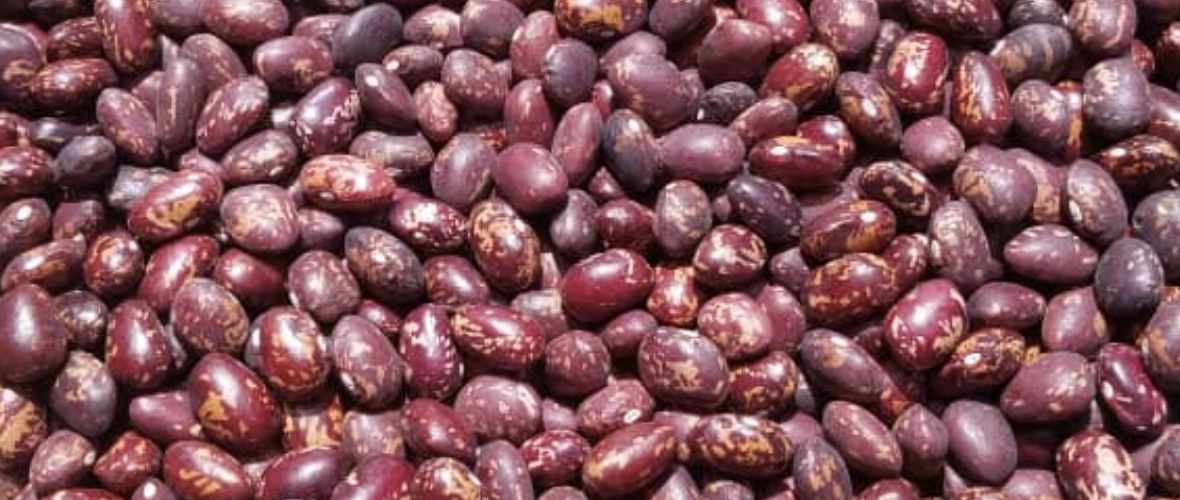Tanzania has long been recognized for its diverse agricultural output, but its rising prominence as a global bean producer is remarkable. Despite the average bean plot being just 0.9 acres, Tanzania has become Africa’s largest producer and ranks 7th globally. This feature explores the significance of beans in Tanzania’s agricultural economy, the critical challenges of post-harvest loss (PHL), and ongoing efforts to ensure this mighty crop’s continued impact on food security and economic growth.
Beans as a Lifeline for Smallholder Farmers
Beans (Phaseolus vulgaris) are essential to Tanzanian households, providing both sustenance and a steady income source for nearly 5.8 million rural families. Smallholder farmers, cultivating plots averaging less than an acre, demonstrate a remarkable dedication to this crop, which plays an outsized role in Tanzanian diets. Each person consumes an average of 19.3 kg of beans annually, underscoring the crop’s importance for food security. Beans are rich in protein and nutrients, making them indispensable to Tanzanians’ daily diets and an accessible source of nutrition that supports health and development across the country.
An Export Powerhouse
While beans feed millions of Tanzanians, they also bolster the country’s economy through exports. Tanzania exports approximately 48% of its bean production to neighboring countries like Kenya, Uganda, and Rwanda, and as far as South Africa and DR Congo. Since 2003, bean exports have grown at an impressive rate of 10% annually, fueling economic stability and strengthening regional trade. This steady demand for Tanzanian beans in international markets provides a reliable source of income for farmers, enabling them to reinvest in their plots and support their families.
Challenges in Post-Harvest Handling
Despite Tanzania’s strong production capabilities, post-harvest loss (PHL) presents significant obstacles to achieving the full potential of its bean sector. The SAGCOT PHL Report reveals that Tanzania’s beans suffer an overall PHL rate of 19.5%, with major losses occurring during storage (4.7%) and harvesting (4.4%). The limited use of advanced storage solutions, such as hermetic bags, results in many farmers relying on traditional storage methods, with 93% of beans kept in pots, drums, or other non-airtight containers. This increases vulnerability to moisture, pests, and spoilage, ultimately leading to reduced income for farmers and decreased food availability for consumers.
Additionally, transportation poses challenges for bean producers. A staggering 69% of beans are transported via motorcycles, which are less stable and prone to spillage, contributing to further losses along the supply chain. Drying practices also impact bean quality, with 5% of farmers still drying beans directly on the ground. This method raises contamination risks and potential spoilage, indicating a need for better practices and awareness in post-harvest handling.
Productivity Insights
The variability in bean yield across Tanzania also highlights areas for improvement in productivity. The national average yield is 0.5 tons per hectare, with Mbeya Rural district achieving the highest yields of 0.9 tons per hectare, while Rungwe records only 0.2 tons per hectare. This stark difference in yield points to disparities in farming techniques, soil fertility, and access to resources across regions. Addressing these discrepancies could significantly increase overall production, leading to more stable food supplies and enhanced livelihoods for farmers.
Moreover, while women in Tanzanian culture traditionally manage beans, only 15% of bean farmers in surveyed areas are women, indicating a need to empower more female farmers to participate in the sector. Increasing female representation in bean farming can introduce new efficiencies, perspectives, and potential innovations to the industry. Additionally, a notable 82% of farmers still rely on manual harvesting methods, which, while cost-effective, are labor-intensive and increase the risk of crop shattering. Mechanization could significantly improve harvesting efficiency and reduce the time farmers spend on this laborious task.
Efforts to Reduce Losses and Enhance Productivity
Recognizing the importance of addressing post-harvest loss, several initiatives are in place to improve Tanzania’s bean sector. Among these is the Feed the Future Tanzania Tuhifadhi Chakula (Let’s Save Food) project, funded by USAID and implemented by TAHA and SAGCOT Centre. This project focuses on reducing post-harvest losses through improved storage facilities, infrastructure development, and farmer education on advanced handling practices.
Introducing cost-effective technologies like hermetic storage bags offers a substantial improvement over traditional storage methods, protecting beans from moisture, insects, and rodents. Transportation infrastructure improvements and better access to markets also play critical roles in reducing losses during transit. By empowering farmers with knowledge and tools to minimize PHL, the project contributes to higher yields, increased incomes, and better food security outcomes for Tanzanians.
A Green Future for Tanzania’s Bean Sector
Tanzania’s bean sector has vast potential to grow both regionally and globally. Reducing post-harvest loss by even a modest 10% could result in more beans reaching local and international tables, meeting the needs of more consumers and enhancing food security. This increase in available beans could boost Tanzania’s export capacity, strengthening its position in East African trade and creating more stable revenue streams for farmers.
Investment in post-harvest technology, training, and infrastructure could help Tanzania maintain its lead in Africa while moving up in global rankings. By addressing challenges like yield variability, empowering women in bean farming, and encouraging more sustainable practices, Tanzania’s bean sector could achieve transformative growth. Each incremental improvement has a ripple effect—boosting income for farmers, feeding more people, and ultimately driving economic resilience across the country.
Tanzania’s bean industry exemplifies the impact of smallholder farming on food security, economic stability, and trade. From small plots to international markets, Tanzanian beans are a testament to the potential of agriculture to drive meaningful change. The bean sector can reach new heights with improved practices, storage, and transport, benefiting millions of Tanzanians and beyond. Reducing post-harvest loss and empowering more farmers are key steps toward this brighter future, where Tanzania’s beans not only nourish the nation but also play a crucial role on the global stage.
Source: SAGCOT (2024). Identification of Post-Harvest Loss Technologies and Adoption Barriers in Maize, Rice, and Common Beans Value Chains.
